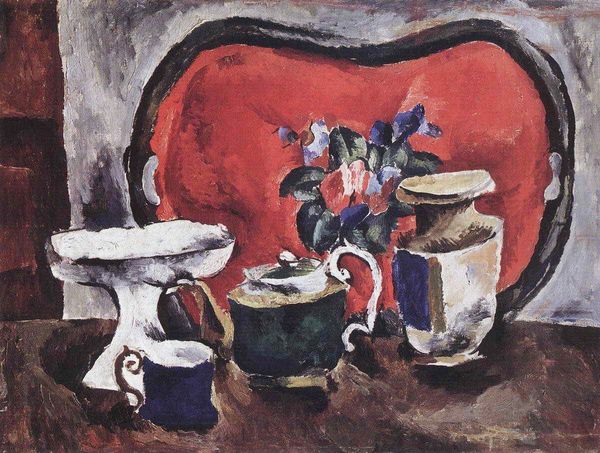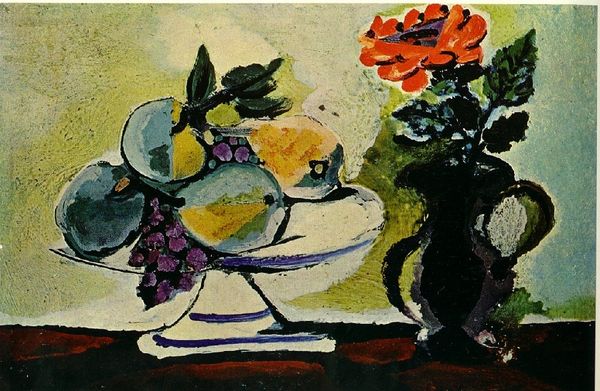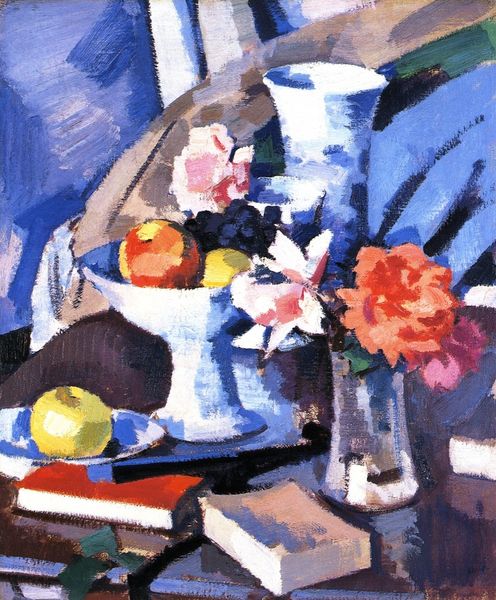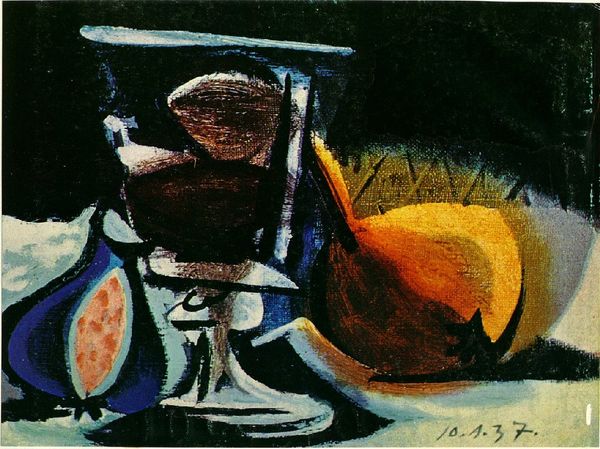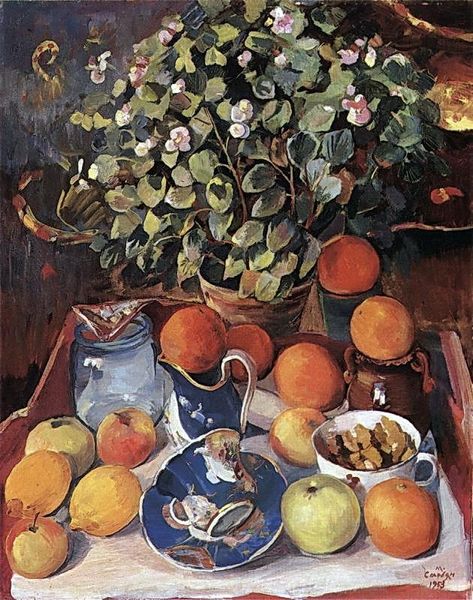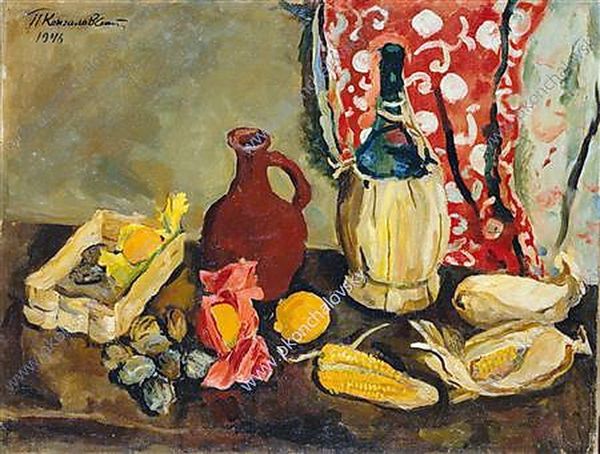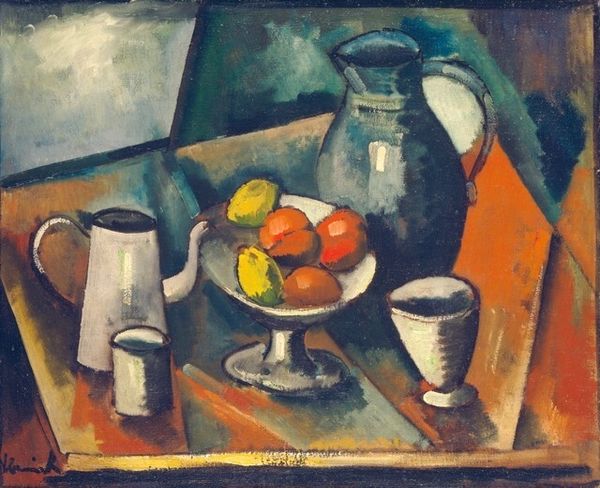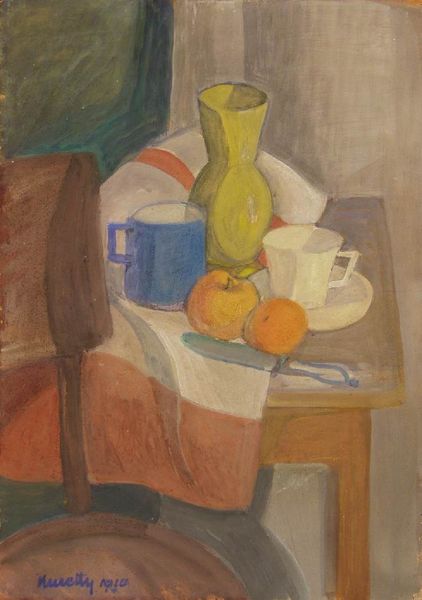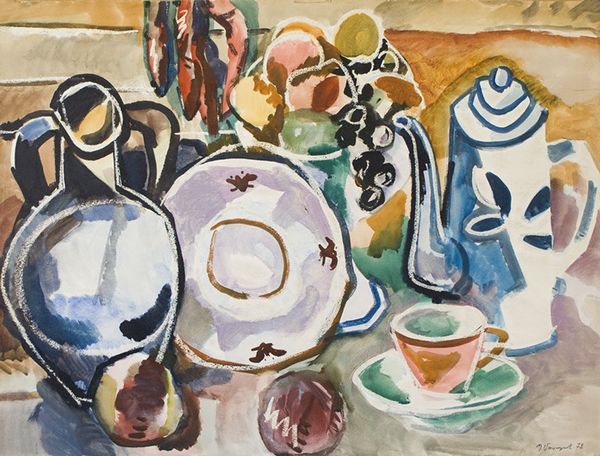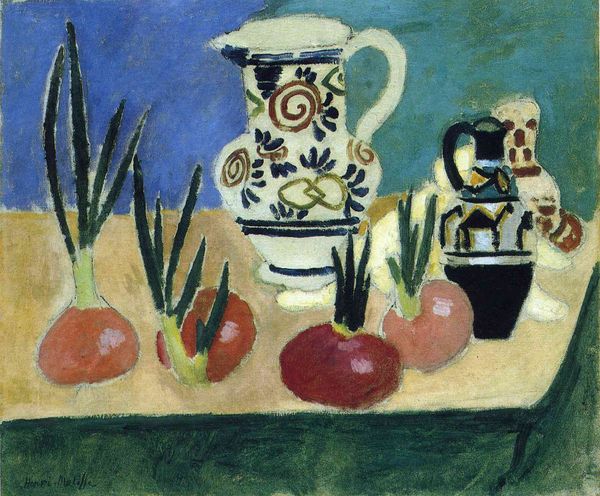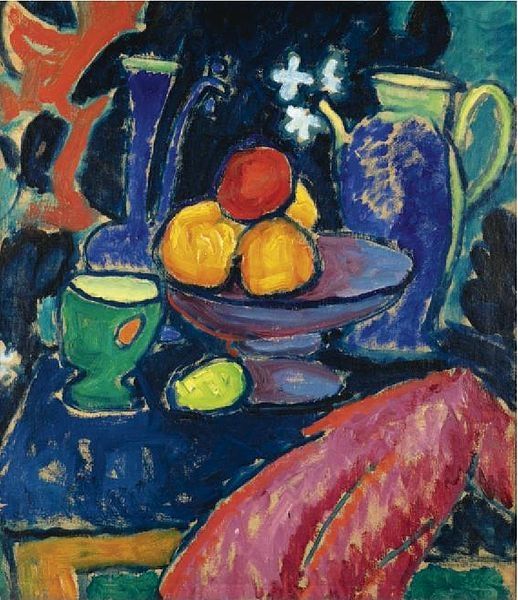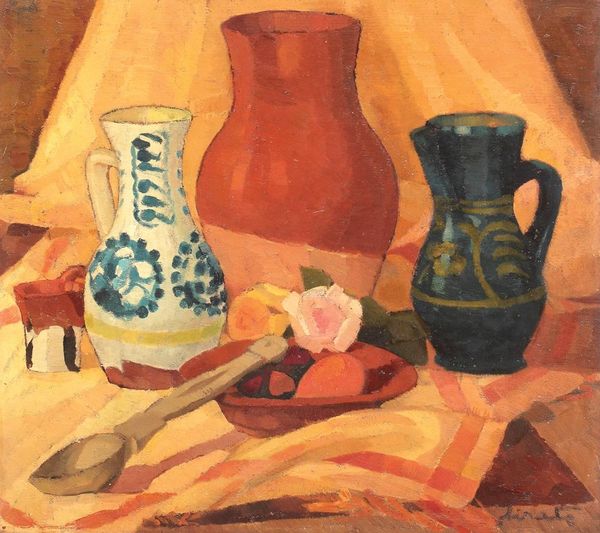
oil-paint, impasto
#
still-life
#
oil-paint
#
handmade artwork painting
#
oil painting
#
impasto
#
geometric
#
russian-avant-garde
#
modernism
Copyright: Public domain US
Editor: We're looking at Pyotr Konchalovsky's "Still Life with a Red Tray" from 1916, an oil painting on canvas. The impasto technique really makes the objects jump out. I find the arrangement of objects almost sculptural. What do you make of the composition, focusing purely on its form? Curator: Indeed. Focusing on form, one notices immediately the interplay of geometric volumes. The cylindrical bodies of the pitcher and the teacup provide a staccato rhythm against the more curvaceous contours of the fruit bowl and the floral arrangement on the tray. The planar construction within each object leads to a disruption of form, what does that evoke in you? Editor: It makes me think of fragmented images and maybe an attempt to capture multiple viewpoints at once, or some type of breakdown in realistic presentation. Curator: Precisely. Look at the way the light interacts with these constructed forms. Notice the localized contrast—a bright highlight next to a dark shadow on the side of the pitcher. It's a series of oppositions of high against low values. Are those localized moments affecting the relationship between the objects? Editor: I think so. The brightness makes the pitcher seem much closer than the dark space behind the fruit bowl, but it doesn’t entirely succeed. Instead, the objects seem intentionally ambiguous in relation to one another. Curator: Exactly! The planes aren't quite convincing in creating the depth one would expect; yet the objects themselves remain concrete due to the artist’s materiality. This internal visual dialogue seems to indicate something other than imitation. It indicates an entirely different intention for its representation. Editor: That makes a lot of sense. I hadn't thought of it as a dialogue before. Curator: Every work contains such tensions. By isolating and observing these tensions, our comprehension increases exponentially.
Comments
No comments
Be the first to comment and join the conversation on the ultimate creative platform.
